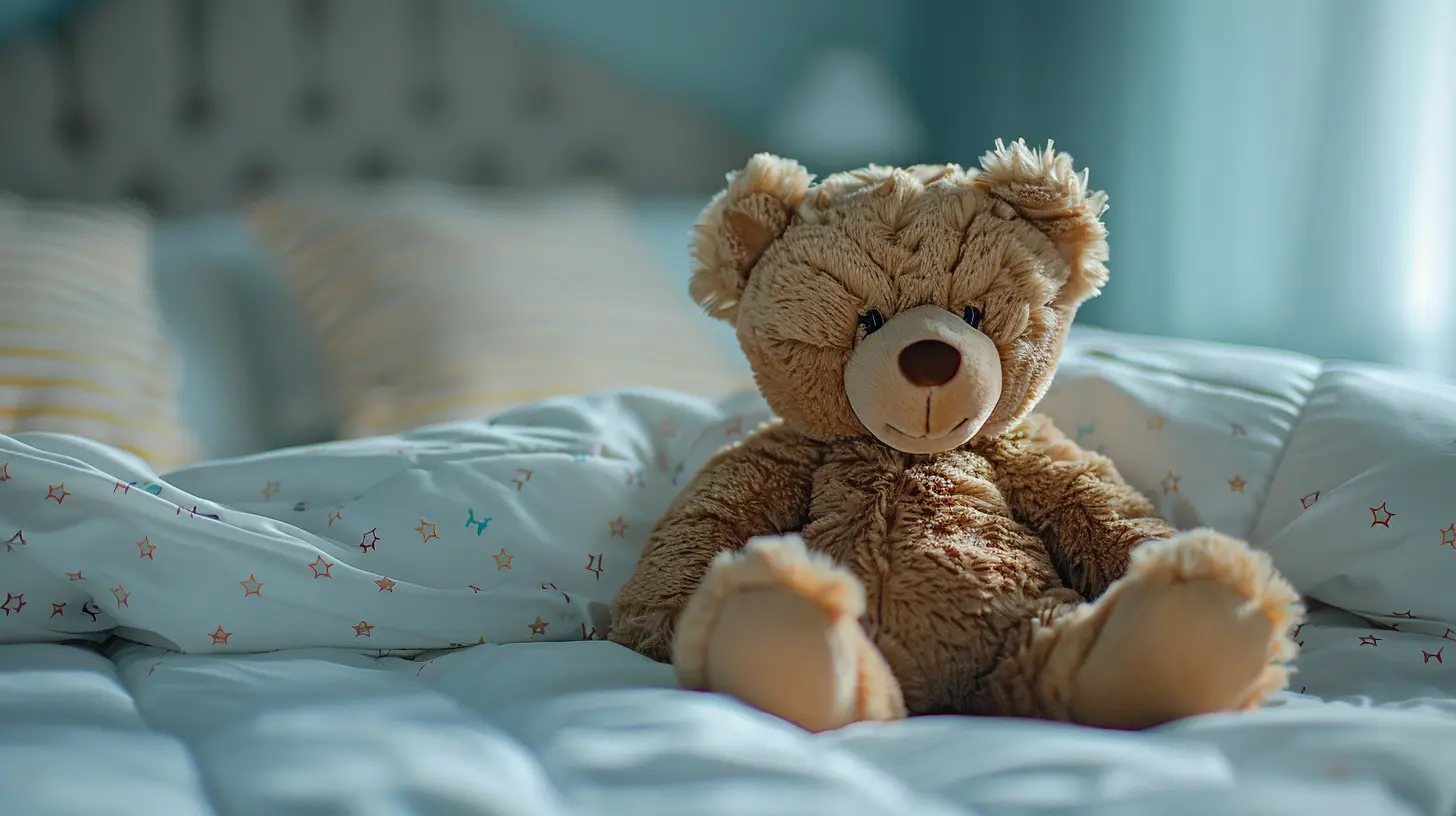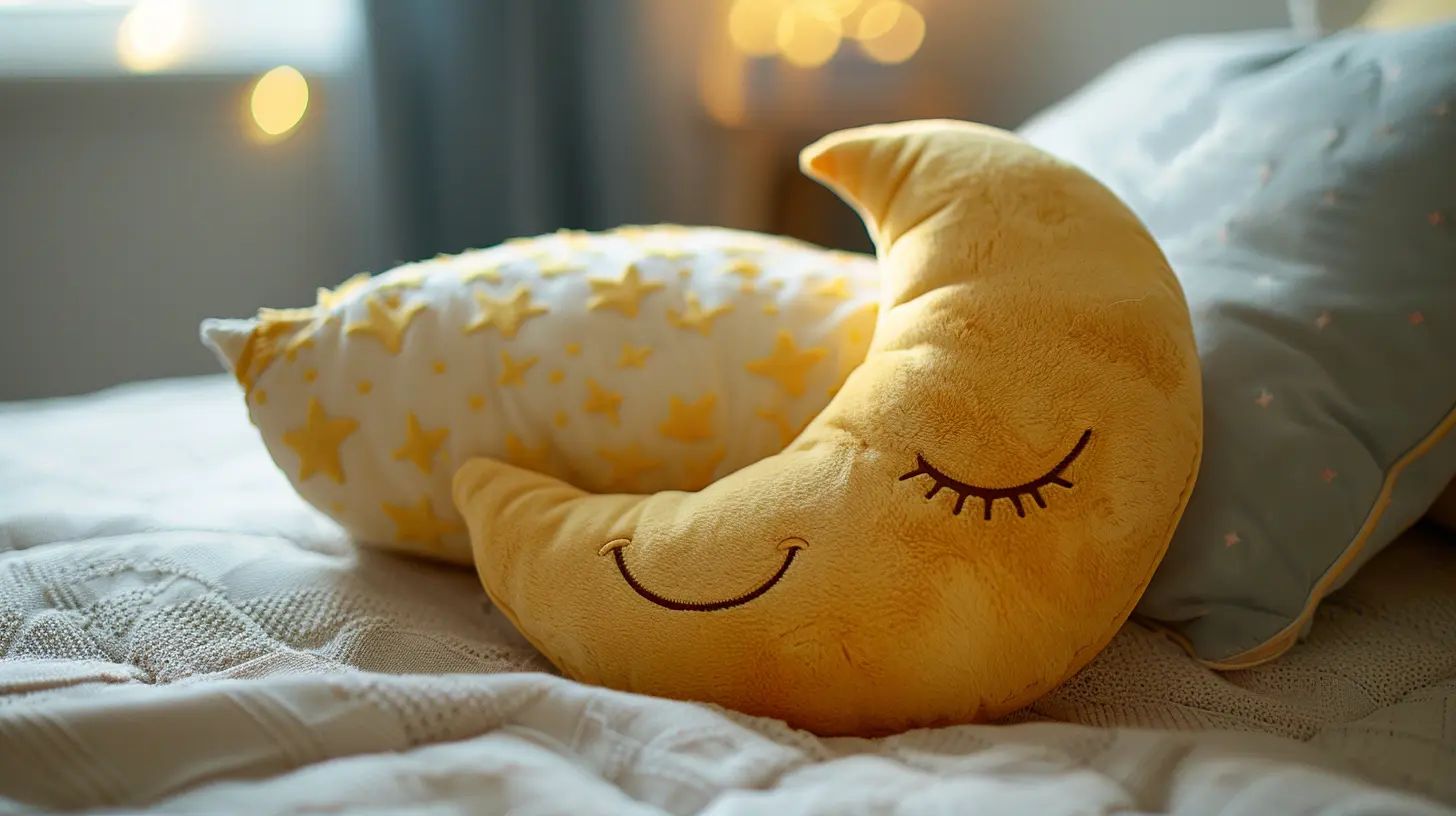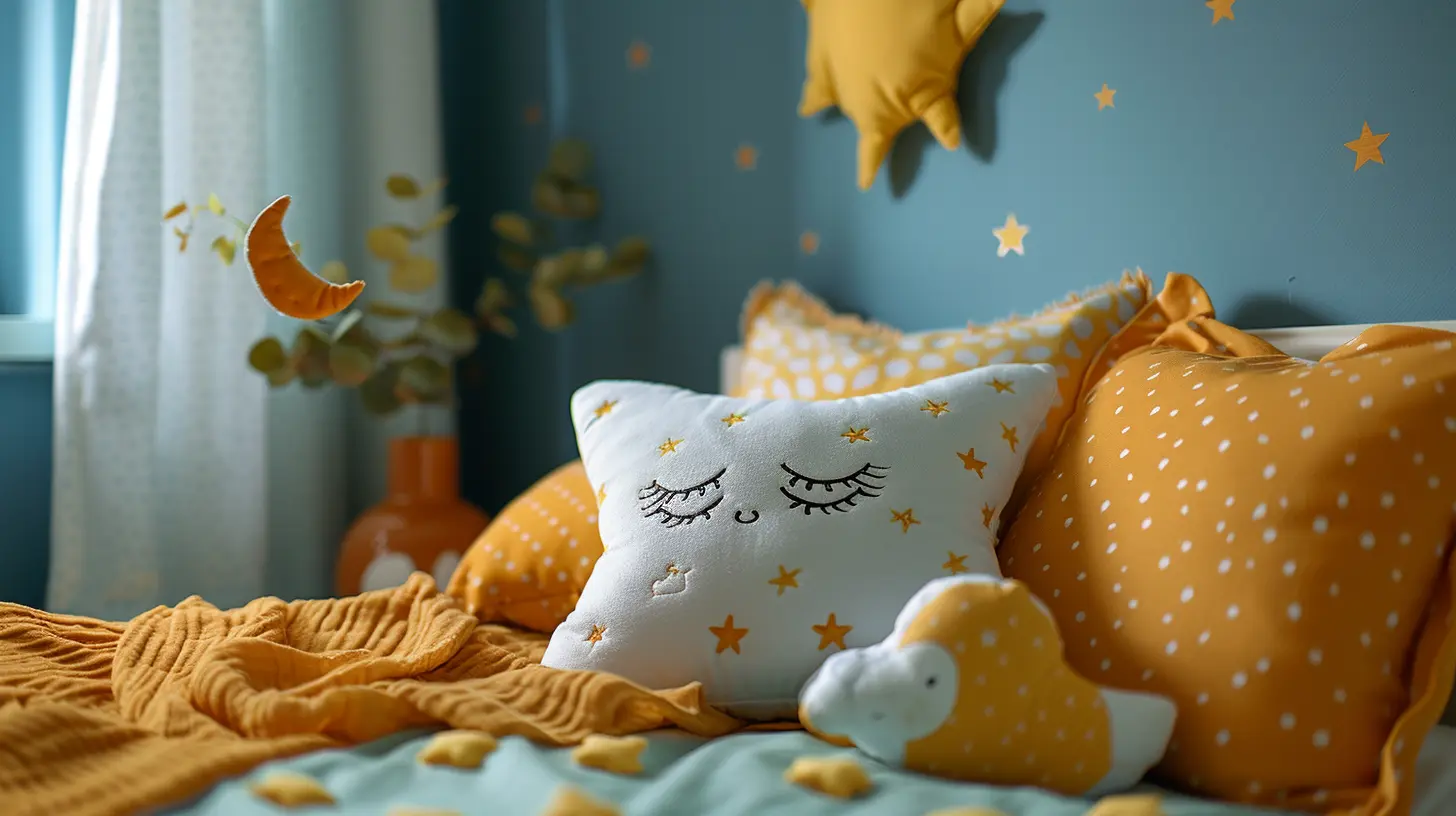How to Introduce a Lovey or Comfort Object for Better Sleep
20 September 2025
Let’s be honest — bedtime can feel like a rollercoaster ride without a seatbelt. One night your little one drifts off like a dream, and the next, it’s a battle of cries and pleas for five more hugs. Sound familiar?
If you’ve ever heard of introducing a “lovey” or comfort object to help smooth out the ride, you’re definitely onto something. And if you're not quite sure what that is or how to go about it, you’re in the right place.
This guide is packed with real-life, no-fluff advice on how to introduce a lovey or comfort object for better sleep — and yes, the kind of sleep where everyone (including you) gets some solid, uninterrupted Zzz’s.
What Exactly Is a Lovey?
First things first — what is a “lovey”? A lovey is any soft, cuddly object that becomes your child’s go-to source of comfort. It could be a little blanket, a stuffed animal, or even a raggedy piece of cloth with no recognizable shape.The magic of a lovey isn’t in how it looks — it’s in the emotional connection your child builds with it.
Think of it as your child’s emotional backup singer. When you're not there to soothe, the lovey steps in and takes over like a cozy little superhero.
Why a Lovey Can Work Wonders for Sleep
Babies and toddlers thrive on consistency and comfort. A lovey provides both.When used during bedtime routines, a comfort object becomes a cue that it’s time to relax and rest. Over time, your child starts to associate that specific item with feeling safe, calm, and sleepy.
Here’s what makes a lovey so effective:
- Predictability: The lovey is always the same — unlike the day, which is full of surprises.
- Reassurance: It provides familiar comfort, especially when you're not in the room.
- Transition support: It helps during big changes like weaning, sleep training, or daycare transitions.
- Sleep independence: Encourages self-soothing, meaning fewer midnight wake-ups… for both of you.
When Is the Right Age to Introduce a Lovey?
This one’s super important. You don’t want to toss a stuffed giraffe into the crib on day one.Most experts suggest waiting until your baby is at least 12 months old before leaving a lovey in the crib unattended. This is to reduce any risk of suffocation and keep sleep safe.
But if your baby is younger, you can use the lovey during soothing routines (like rocking, feeding, or cuddling), just don’t leave it in the crib until they're old enough.
Pro tip: If your child is closer to toddlerhood and still hasn’t bonded with a comfort object, don’t worry. It’s never too late to introduce one. Kids can form attachments to loveys even in preschool!
Choosing the Right Lovey: What to Look For
Not all loveys are created equal. You’ll want something soft, safe, washable (trust me on this one), and not too precious (because if you lose it, you will cry).Here’s what to consider:
1. Size Matters
Pick something small enough for your child to grab and carry but big enough that it won’t easily disappear between couch cushions.2. Safe Materials
Go for breathable fabrics. Avoid anything with small parts, buttons, or wires that could become a hazard.3. Washable is Non-Negotiable
Let’s be real — this lovey is going to get drooled on, dropped in dirt, and who knows what else. Make sure you can toss it in the washer without panic.4. Avoid “Irreplaceable” Items
Don’t let your child fall in love with your grandma’s only handmade quilt. Try to select a lovey you can buy duplicates of because someday it will get lost.How to Introduce a Lovey: Step-by-Step
Now for the fun part — helping your child form a bond with their new buddy.Step 1: Pick the Right Moment
Start when things are relatively calm. If your child is teething, sick, or going through a big transition, they may be too overwhelmed to build a new attachment.Step 2: Make It Part of the Routine
Include the lovey during regular soothing times — cuddles, rocking, nursing, reading, even stroller walks. The more your child sees it as part of cozy, safe moments, the quicker they'll bond.Step 3: Scent it with You
Yes, this sounds weird, but it works. Sleep with the lovey a few nights or tuck it in your shirt. The familiar scent can be extremely comforting!Step 4: Give It a Name and Personality
Kids LOVE stories and characters. Give the lovey a name — Mr. Snuggles, Sleepy Bear, Fuzzy. Make it a “buddy” that’s always there for them. Talk about the lovey like it’s part of the family: “Let’s tuck Bunny in, too!”Step 5: Be Consistent
Repetition is key here. Bring the lovey to bed every night. Even if your child ignores it at first, stick with it. Bonds take time.Step 6: Offer It During Upsets
If your child is sad, scared, or overwhelmed, hand them the lovey. Over time, they’ll associate it with emotional support, making it even more valuable at bedtime.Tips for When Things Don’t Go as Planned
Not every child takes to a lovey right away — and that’s okay! Some need more time. Others might pick their own comfort object (hello, random kitchen towel).Here’s how to handle common hiccups:
- Your child shows no interest? Keep modeling it. Keep using it during routines and offer it lovingly without pressure.
- They chose something totally random? Roll with it! If it’s safe and washable, let it be their lovey.
- They become overly attached? If your child can’t function without their lovey at all times, gently set limits. It can be a “sleep-time only” friend, for example.
What If the Lovey Gets Lost?
Cue dramatic music. Losing a lovey can feel like a national emergency.That’s why it’s wise to:
- Buy backups (and rotate them in regularly so they all get equally loved-in)
- Label it with your contact info
- Keep a photo of it for those inevitable posts on local parenting Facebook groups
If it does go missing, don’t panic. Validate your child’s feelings, reassure them, and if they’re old enough, let them be part of picking a new lovey. It can even be a “cousin” or “friend” of the original.
When to Wean Off a Lovey (If Ever)
Here’s the good news: There’s no need to rush this stage.Many kids naturally grow out of needing a comfort object as they get older and more independent. Some may keep it longer, and that’s fine too. There's no gold medal for “baby who gave up their lovey the earliest.”
If you do want to limit lovey use as your child gets older:
- Start by making it a bedtime-only item
- Explain that it needs to stay in a special place during the day
- Celebrate milestones where they choose to leave it behind on their own
Remember — the lovey isn’t a crutch. It’s a bridge. One that helps your child feel safe and secure as they learn to navigate sleep, separation, and independence.
The Emotional Power of a Lovey
Let’s step back for a second and appreciate just how beautiful this whole process is.Imagine being tiny, new to the world, and figuring everything out — lights, sounds, people, even your own body. It’s overwhelming! For kids, a lovey becomes a constant in the chaos. It's a piece of emotional armor.
And for parents? It’s a secret weapon. One small item that can add predictability to unpredictable days, calm to chaotic bedtimes, and rest to restless nights.
So if you're thinking of introducing a lovey, go for it. You’re not just giving your child a cute stuffed bunny. You’re giving them comfort, security, and the gift of better sleep — and that’s something everyone can get on board with.
Quick Recap
If you’re skimming, here’s the TL;DR:- A lovey is a comfort object that helps kids feel safe and sleep better.
- Introduce it around 12 months (but earlier use with supervision is fine).
- Pick something soft, safe, washable, and replaceable.
- Integrate it into calming routines and scent it with your smell.
- Don’t force it — let the bond develop naturally.
- Stick with it, and prepare for some sweet sleep wins.
Final Thoughts
Introducing a lovey? It’s such a simple step with huge emotional payoff. Don’t overthink it. Be consistent, be patient, and watch the magic happen. In the world of parenting, it’s one of the smaller puzzle pieces that can make a big difference — especially when it comes to bedtime.Sweet dreams, fellow sleep warriors.
all images in this post were generated using AI tools
Category:
Baby SleepAuthor:

Maya Underwood
Discussion
rate this article
1 comments
Valeris Martin
This article offers practical tips for introducing a lovey to your child's bedtime routine. The step-by-step approach, from selecting the right object to creating a calming environment, can foster security and comfort, making sleep a more peaceful experience for both parents and children. Great read!
September 29, 2025 at 4:22 PM

Maya Underwood
Thank you for your kind words! I'm glad you found the tips helpful for creating a peaceful bedtime routine. Happy reading!


